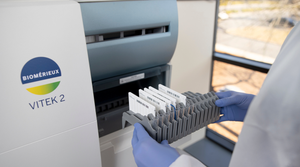6 Bionic Devices Enabled by Sensor Advancements
High-tech bionic devices are enabling patients to regain independence, providing them with hope, and improving their quality of life—and behind it all are advanced sensors.
April 27, 2017

Hear the term “bionics” and you might be inspired to launch into your best Oscar Goldman impression from the opening credit sequence of the 1970s hit, The Six Million Dollar Man: "Gentlemen, we can rebuild him. We have the technology. We have the capability to make the world's first bionic man. Steve Austin will be that man. Better than he was before. Better...stronger...faster." Decades later, we haven’t quite built a race of Steven Austin-esque super humans—yet. But advancements in the field of bionics—driven heavily by sensing technologies—are empowering people with debilitating conditions and enabling them to thrive. Encompassing a range of devices that include exoskeletons, limbs and appendages, cochlear implants, and artificial eyes, hearts, and pancreases, high-tech bionic devices are enabling patients to regain independence, providing them with hope, and improving their quality of life. MD+DI takes a look at six innovative bionic products and the technologies behind them. [Image courtesy of ALYSSA AVILES/THE LOVELY LYSS]
High-tech bionic devices are enabling patients to regain independence, providing them with hope, and improving their quality of life—and behind it all are advanced sensors.
You May Also Like

